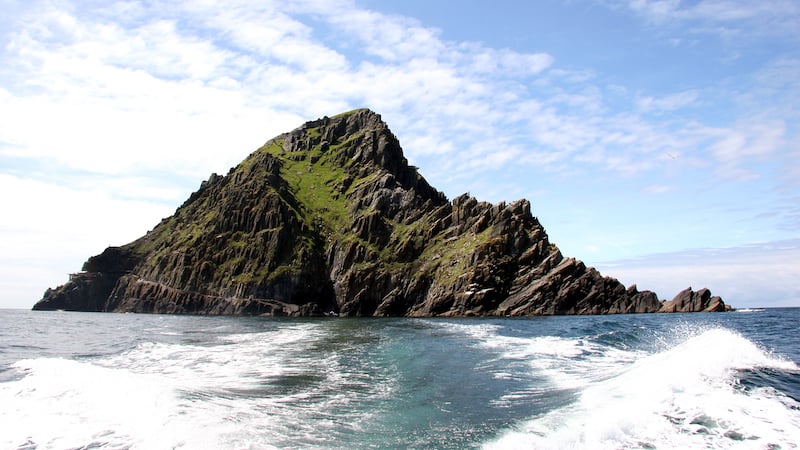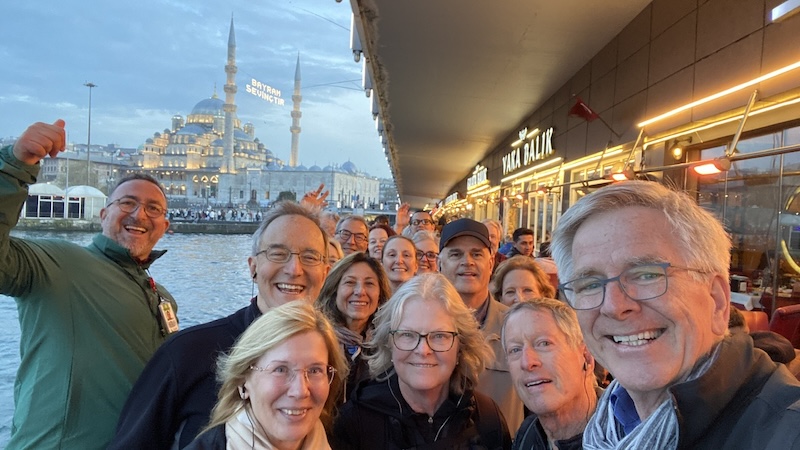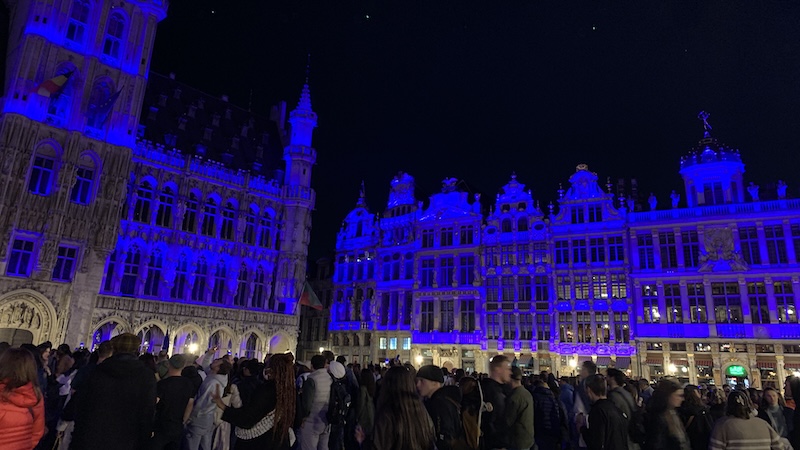Ireland’s Ring of Kerry
Taking communications to a new level, from tetrapods to Reuters and beyond

On an unexpected tour of Ireland’s Ring of Kerry, travel writer Rick Steves sees eons-old tetrapod tracks and learns how important advances in communications touched these shorelines.
Squinting into the wind and rain, we marched from a desolate parking lot on the southwest tip of Ireland down a slippery path. I turned a corner and the mean-looking surf was still a long walk away. Noticing my questioning look, my guide, Conner, egged me on. He was hellbent on showing me “the tracks of tetrapods.”
I was exploring the much-loved Ring of Kerry, assuming I’d be seeing quaint pubs, sheep farms, and plush Emerald Isle beauty. But Conner was determined to complement the traditional sights by introducing me to a different side of this touristy destination (a.k.a. the Iveragh Peninsula). It’s so crowded with tour buses that all the companies have agreed to tour counterclockwise in a convoy to keep traffic from getting jammed up.
We finally reached the water’s edge. On a shiny slab of mud-turned-to-rock, Conner reverently showed me faint tracks, declaring, “These are tetrapod tracks.” He told me many archaeologists believe this is the place where the first fish slithered out of the water on four stubby legs 385 million years ago onto what would become the Isle of Saints and Scholars.
Remembering it was also the Island of Blarney, I skeptically countered, “…at least many Irish archaeologists.”
In a way only an Irish tour guide can, Conner explained – using evidence all around us and reminding me that tetrapods eventually evolved into bipeds – how communication is a big part of the story of this friendly island home of the legendary gift of gab.
He pointed to the distant, barely visible Skellig Michael Island breaking the horizon far out at sea. The 700-foot-tall rock has a tiny cluster of abandoned igloo-like beehive huts clinging near its summit like stubborn barnacles. In the sixth century Irish monks settled there to communicate with God. Inspired by the earlier hermit monks in the Egyptian desert, these Irish hermits, too, used the purity and silence of extreme isolation as a tool to get closer to God. They collected rainwater in cisterns and lived off fish and birds. Chiseling the most rudimentary life out of solid rock, the monks lived a harsh, lonely, disciplined existence. For over 500 years they were all about meditating and praying – in other words, heavenly communication.
They were also about human communication. Irish scribes, like those living on Skellig Michael, kept literate life alive in Europe through the darkest depths of the so-called Dark Ages. In fact, around the year 800, when the ruler Charlemagne (the greatest European ruler of that age) needed good literate people to help run his empire, he brought in monks from this part of Ireland to be his scribes.
Then, moving from evolution and literacy to modern communication, my guide pointed past Skellig Michael to a passing transatlantic ship. A thousand years after those Irish monks nursed Europe’s fragile and flickering flames of literacy, this is where the fastest communication came to Europe from America.
In the mid-19th century, Reuters – who provided a financial news service in Europe – couldn’t get his pigeons to fly across the Atlantic. So he relied on ships coming from America to drop a news capsule overboard as they rounded this southwest corner of Ireland. Reuters’ boys would wait right here – just a short walk from those first tetrapod tracks – in their little boats with nets on long poles to “get the scoop.” It’s said that Europe learned of Lincoln’s assassination in 1865 from a capsule tossed over a boat and scooped out of these waters.
Taking early communication one step further, the first telegraph cables were laid (from the largest ship of its day by a company that would become Western Union) across the Atlantic from this same corner of Ireland to Newfoundland. Now the two hemispheres had telegraphic communication. Queen Victoria was the first to send a message – greeting an American president in 1858. (The cable broke more than once, but it was finally permanently secured in 1866.)
Radio technology pioneer Guglielmo Marconi, who was half-Irish, set up an early wireless telegraphic station in this corner of Ireland before he achieved the first wireless transatlantic communication in 1901 from England to Newfoundland. And when Charles Lindbergh ushered in the age of transatlantic flight in 1927, the first bit of Europe he saw was this stony perch – where those tetrapods first dried off.
Conner and I dropped by a schoolhouse in the nearby town of Knightstown. Its humble museum tells the stories of these quirky bits of local history with intimate black-and-white photos and typewritten pages.
Driving away, under the 21st-century cellphone and satellite tower crowning a hilltop above me, I gazed out at Skellig Michael and told Conner how impressed I was by the communication theme he had woven together that day. Saying, “Great. Let’s have a pint and talk about it,” he pulled into a pub.
PHOTO CAPTION, ABOVE: Hardy tourists visit the island of Skellig Michael, off the Ring of Kerry, where monks helped keep literacy alive in the Dark Ages. CREDIT: Rick Steves.

Explore more of Rick Steves’ Europe in Boomer, from the Ring of Kerry to the canals of Venice
©2023 RICK STEVES
As an Amazon Associate, Boomer Magazine earns from qualifying purchases of linked books and other products.



